Smartphones & Tablets | March 5, 2024
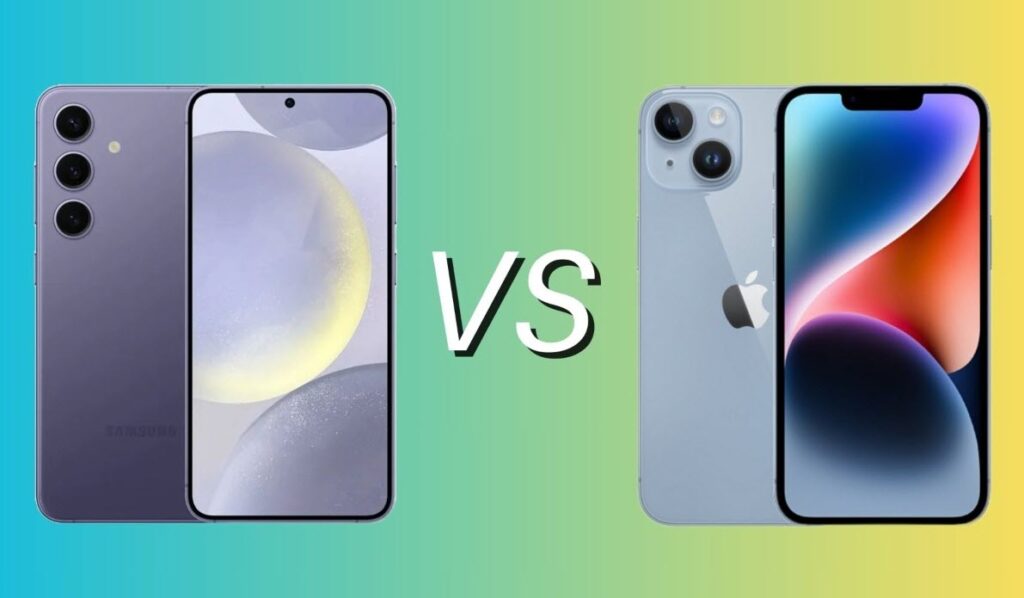
| Samsung Galaxy S24 | iPhone 14 | |
| Screen | 6.2 inches of 2X LTPO Dynamic AMOLED technology, 19.5:9 format, FullHD+ resolution of 2,340 x 1,080 pixels, 120 Hz adaptive refresh rate (1-120 Hz), 240 Hz touch sampling rate, maximum brightness 2,600 nits, HDR10+, Dolby Vision and Corning Gorilla Glass Victus 2 protection | 6.1 inches of Super retina Durable Ceramic Shield |
| Main camera | – 50 megapixel main sensor with f/1.8 focal aperture with video recording capacity in 8K resolution at 30 frames per second – Secondary sensor with 10 megapixel telephoto lens with f/2.4 focal aperture and 3X optical zoom – Tertiary sensor with 12 megapixel wide-angle lens with f/2.2 focal aperture | – 12 megapixel main sensor with f/1.5 focal aperture with video recording capacity in 4K resolution at 60 frames per second – Secondary sensor with 12 megapixel wide-angle lens with f/2.4 focal aperture |
| Selfie camera | 12 megapixel main sensor with f/2.2 focal aperture with video recording capacity in 4K resolution at 60 frames per second | 12 megapixels with f/1.9 focal aperture |
| Internal memory | – 128 GB UFS 3.1 – 256 GB UFS 4.0 | 128GB, 256GB or 512GB |
| Extension | Not available | Not available |
| Processor and RAM memory | – 4-nanometer, eight-core Exynos 2400 at 3.2 GHz max. (Europe and other regions) – Qualcomm Snapdragon 8 Gen 3 4-nanometer eight-core 3.39 GHz max. (United States, Canada and China) – 8 GB of LPDDR5 RAM | – 5-nanometer six-core A15 Bionic chip at 3.23 GHz max. with five-core GPU – 6 GB of RAM |
| Battery | 4,000 mAh with 25W wired fast charging (charger not included in the box), 15W wireless charging and 4.5W reverse charging | 3,279 mAh with 20W fast charging, 15W MagSafe wireless charging and 7.5W Qi charging |
| OS | Android 14 under One UI 6 (upgradable up to Android 21) | iOS 17 |
| Connections | 5G, 4G LTE, dual-band WiFi 802.11 a/b/g/n/ac/6e/7, Bluetooth 5.3, GPS with A-GPS and GLONASS, NFC for contactless payments and USB type C input | 5G, 4G LTE, dual-band Wi-Fi 802.11 a/b/g/n/ac/6, Bluetooth 5.3, GPS + GLONASS, NFC for contactless payments via Apple Pay, Lightning input and satellite connection |
| SIM | Dual nano SIM | Dual nano eSIM (in some markets, there is support for nano SIM) |
| Design | Colors: purple, yellow, black, gray, green, blue and orange | Colors: black, white, purple, light blue and red |
| Dimensions and weight | 147 x 70.6 x 7.6 millimeters and 167 grams | 146.7 x 71.5 x 7.8 mm and 172 grams |
| Featured Features | Under-display ultrasonic fingerprint sensor, AKG stereo speakers with Dolby Atmos, Artificial Intelligence and IP68 waterproof rating (submergence proof) | Face ID, shock detection, IP68 water resistance and 4K cinematic mode at 30 fps for video recording with field blur effect |
| Release date | Available | Available |
| Price | From 900 euros | From 670 euros |
With the arrival of the Samsung S24, a valid question arises: is it better than the iPhone 14, or does it fall short in terms of features? To determine which of the two is more advanced and worth considering in 2024, we will analyze their differences in this Samsung S24 vs iPhone 14 comparison. We will take a look at all their features and prices.
Note that the prices mentioned in the article may vary over time, so we will limit our analysis to the differences as of the publication date.
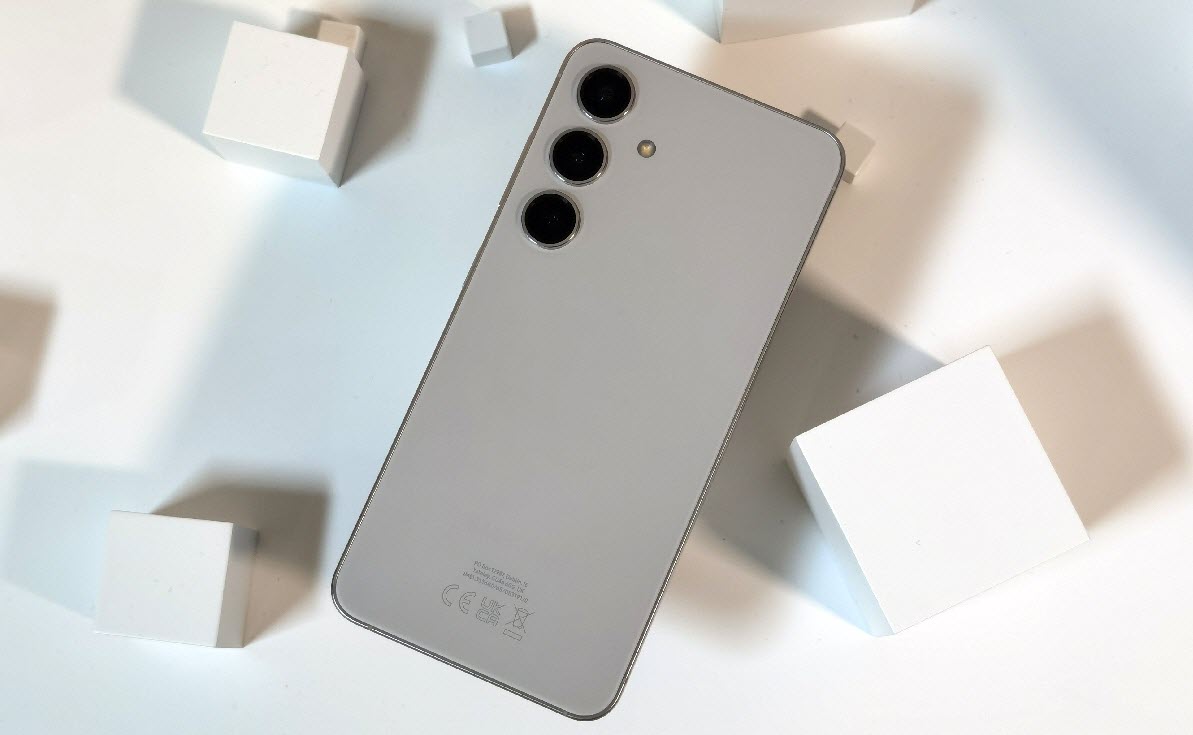
Both the Samsung Galaxy S24 and iPhone 14 are among the best-built phones currently available. However, here the Samsung device has an advantage with aluminum frames, unlike the iPhone 14, which has plastic frames. Both phones boast premium designs, distinguished mainly by their cameras. The Samsung S24 has a floating triple camera aligned vertically, while the iPhone 14 features the typical camera island with two sensors arranged diagonally, a distinctive feature that sets them apart. Additionally, the Samsung S24 has a hole-punch front camera, while the iPhone 14 has an elongated notch housing its front camera and 3D facial recognition system called Face ID.
The screens of both devices are similar in size, with the Samsung S24 being slightly larger at 6.2 inches compared to the iPhone 14’s 6.1 inches. The Samsung Galaxy S24 features LTPO Dynamic AMOLED 2X technology, Full HD+ resolution of 2,340 x 1,080 pixels, and an adaptive refresh rate of 120 Hz that can vary from 120 Hz to 1 Hz depending on usage and the running app or game. The iPhone 14, on the other hand, comes with an OLED Super Retina XDR display, a resolution of 2,512 x 1,172 pixels, and a fixed refresh rate of 60 Hz, making it one of the few high-end phones maintaining this refresh rate in 2024.
Another area where the Samsung S24’s display surpasses that of the iPhone 14 is in maximum brightness, with the former reaching a peak of 2,600 nits, more than double the 1,200 nits achieved by the latter.
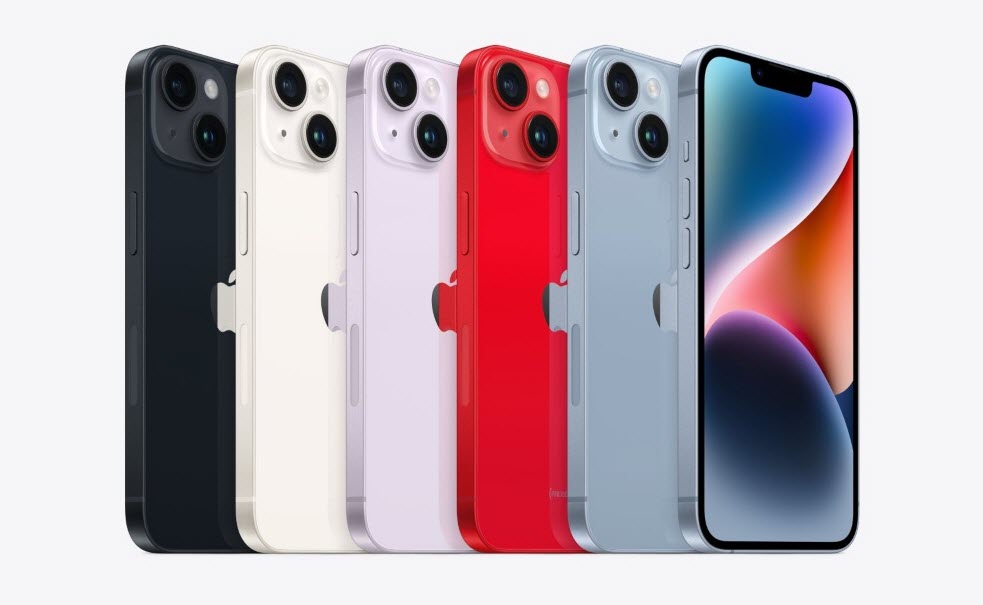
Being two of the most advanced flagship phones on the market, we can expect excellent day-to-day performance from both. While they are both powerful and somewhat comparable in this aspect, there are differences between the Samsung S24 vs iPhone 14, mainly due to their use of different processors.
The Samsung Galaxy S24 comes with either the Exynos 2400 chipset in Europe or the Qualcomm Snapdragon 8 Gen 3 in other regions like China and the United States. The iPhone 14 features a single processor, the A15 Bionic, used across all markets.
In terms of performance, the Galaxy S24 with the Snapdragon 8 Gen 3 is more powerful than the Galaxy S24 with the Exynos 2400. However, the power of the Qualcomm-equipped device is not significantly superior to that of the iPhone 14 with the A15 Bionic. In this regard, both phones are relatively equal, as mentioned earlier. Beyond benchmark numbers, such as those from AnTuTu and Geekbench, it’s worth noting that these phones deliver exceptional performance in all situations, making them ideal for running various applications and demanding games with the highest graphics quality.
In terms of memory, the iPhone 14 is available with internal storage options of 128GB, 256GB, or 512GB. The Samsung device comes in two variants, one with 128GB of UFS 3.1 storage and another with 256GB of UFS 4.0 storage. The iPhone 14 has 6GB of RAM, while the Galaxy S24 comes with 8GB. Neither phone supports memory expansion via a microSD card.
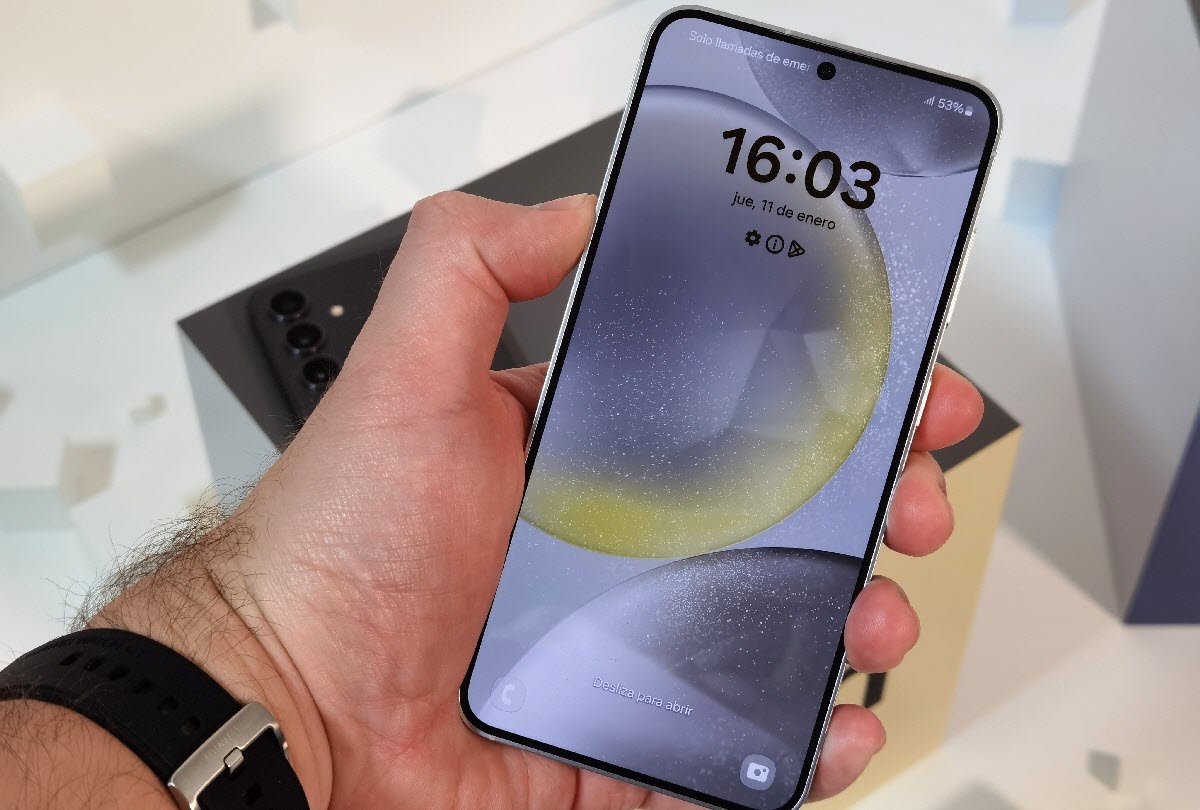
The photo and video quality achievable with the Samsung Galaxy S24 and iPhone 14 is enviable. Both phones are among the best for capturing photos and recording videos in various conditions, whether day or night. Neither is significantly superior to the other, beyond the advantages they may have in specific aspects. For instance, the iPhone 14 excels in video recording, while the Samsung S24 features optical zoom and has many more camera functions. The latter also leverages Artificial Intelligence to enhance photos and videos and provide advanced editing features.
The Samsung Galaxy S24 has a triple camera setup led by a 50-megapixel main sensor with an f/1.8 aperture, capable of recording 8K video at 30 frames per second. The other two sensors are a 10-megapixel telephoto with an f/2.4 aperture and 3x optical zoom and a 12-megapixel ultrawide with an f/2.2 aperture.
The iPhone 14 opts for a dual-camera configuration. The main sensor is 12 megapixels with an f/1.5 aperture, capable of 4K video recording at 60 frames per second, while the secondary is a 12-megapixel ultrawide with an f/2.2 aperture. This phone only has digital zoom, lacking a telephoto lens for optical zoom.
On the front, the Samsung S24 features a 12-megapixel selfie camera with an f/2.2 aperture and support for 4K video recording at 60 frames per second. The iPhone 14’s front camera is also 12 megapixels, capable of recording in the same resolution and frame rate, but with a wider f/1.9 aperture, theoretically delivering better results in low-light conditions.
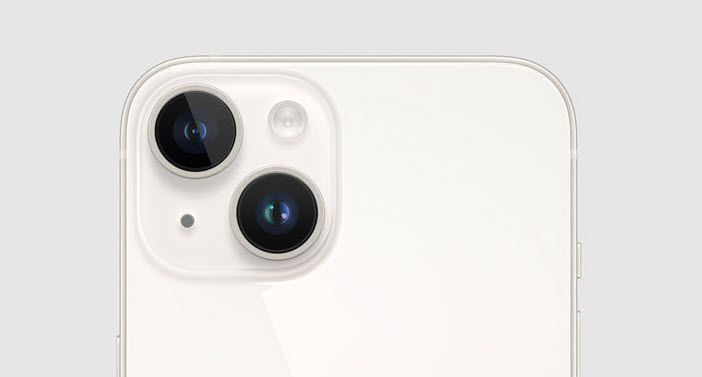
Continuing with the Samsung Galaxy S24 vs iPhone 14 comparison, let’s take a look at their batteries, where significant differences are found. The first difference is in the battery size, with the Galaxy S24 having a 4,000 mAh battery and the iPhone 14 having a 3,279 mAh battery. Additionally, the former supports 25W fast charging via cable, while the latter has 20W fast charging. Both phones feature 15W fast wireless charging, but only the Samsung S24 has 4.5W reverse wireless charging. Neither includes a charger in the box.
In terms of connectivity, the Samsung S24 is a step ahead with USB Type-C 3.2 and Wi-Fi 7. The iPhone 14 comes with a Lightning port, which has a lower data transfer speed. It also has Wi-Fi 6, a less advanced version, but it comes with satellite connectivity, allowing it to send emergency messages regardless of mobile coverage, although this feature is currently limited to certain countries. Otherwise, both phones feature Bluetooth 5.3, NFC for contactless payments, GPS with A-GPS, 5G, and 4G LTE.
Regarding other features, the Samsung Galaxy S24 comes with an in-screen ultrasonic fingerprint reader, facial recognition, and AKG stereo speakers with Dolby Atmos. The iPhone 14, on the other hand, has Face ID, stereo speakers, and crash detection functionality. Both phones are IP68 water-resistant, making them submersible.
In terms of software, the Samsung S24 comes with Android 14 under One UI 6, while the iPhone 14 runs on iOS 17.3. Additionally, the Galaxy S24 boasts 7 years of operating system updates, two years more than the iPhone 14, although the latter currently has only 4 years of updates since it was launched with iOS 16 and has already been updated to iOS 17. Furthermore, the Samsung Galaxy S24 is packed with Artificial Intelligence features.
The official launch price of the Samsung Galaxy S24 was around 900 euros for the base memory variant, making it about 230 euros more expensive than the iPhone 14, which can currently be purchased for around 670 euros and up.
Taking this into account, and having analyzed all the differences between the two phones, we can say that the winner of this iPhone 14 vs Galaxy S24 comparison is the Samsung device, and here’s why.
Despite being more expensive, the Samsung Galaxy S24 is superior to the iPhone 14. It’s just a matter of time before its price drops. Remember that the iPhone 14 had a similar launch price, so they would be evenly matched in a few months. With that said, the Galaxy S24 has several advantages. The first is found in its display, being slightly larger, much brighter, and having an adaptive refresh rate of 120 Hz, a feature lacking in the iPhone 14.
The model with Qualcomm’s Snapdragon 8 Gen 3 is ahead in terms of performance, while the one with the Exynos 2400 is more efficient, primarily due to its 4-nanometer node size. The Samsung S24 also comes with more spacious RAM. Additionally, in terms of cameras, it has a main sensor that records at a much higher resolution and boasts a telephoto lens with 3x optical zoom.
The battery of the Samsung Galaxy S24 is larger, but this doesn’t necessarily mean its battery life is significantly better than that of the iPhone 14. However, it has more powerful fast charging, although it takes a bit longer to charge due to its larger battery size. Moreover, the Galaxy S24 features a USB Type-C 3.2 port, supporting higher data transfer speeds. It also has Wi-Fi 7 and other interesting features, including an in-screen ultrasonic fingerprint reader, AKG stereo speakers, and 7 years of Android updates.